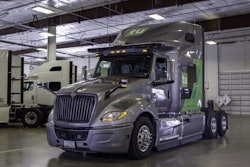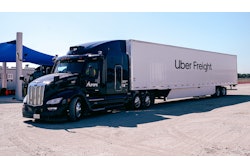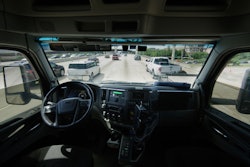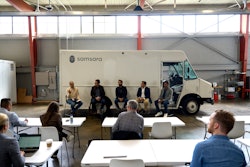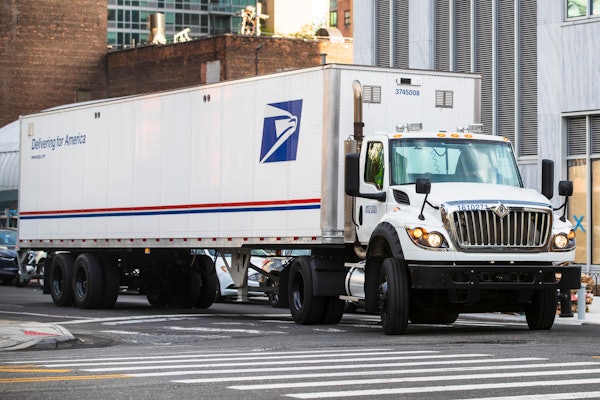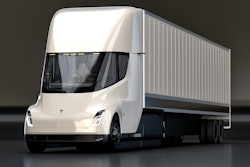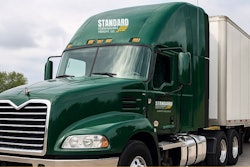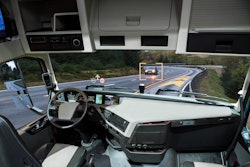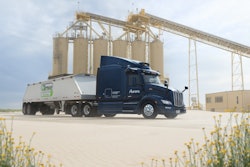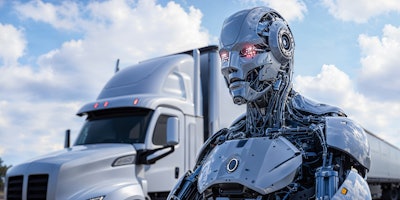
There is no doubt that the Man in Black wrote and performed great songs that would stick in your ear as the miles roll by on a long trip. One Johnny Cash song from 1974 got me thinking about what music the new autonomous truck drivers will be listening to. I think their anthem will be "All I Do Is Drive."
In April and May we saw a lot of media coverage of autonomous trucking leader Aurora running its first driver-out runs between Dallas and Houston on Interstate 45. This milestone was to be the transition from having a human safety driver sitting in the driver’s seat, to having no one sitting in the driver’s seat. The latter was described by some as driver-out. The details seem a bit murky on whether there were observers on-board sitting in the sleepers, but from all the photographs, there definitely was not a human sitting in the driver’s seat, nor anything at all sitting in the driver’s seat.
Driver-out really is a misnomer. An autonomous driver is still in the truck, just not physically sitting in the seat behind the steering wheel. The autonomous driver is living in the software, the computers, the sensors, all of which are carefully integrated into the truck. Aurora labels this as an “Aurora Driver-powered self-driving vehicle.” I expect many people will call them just Volvos, Peterbilts or Kenworths. This may be a rebranding concern to Aurora, just as many OEM trucks are known by their OEM name plates not by whether or not they are Cummins powered.
Aurora is positioning to be the Cummins of autonomous vehicles by providing an autonomous driver system to, hopefully, all the OEMs in the future, just as Cummins engines are largely an option for many OEMs. It’s important to Aurora to not lose its brand identity and to appeal to all OEMs.
To most people, I suspect, the concept of an autonomous driver probably includes a human shaped robot that climbs into and out of the truck just as a human driver does. Blame science fiction books and movies on forcing that imagery into our brains. Note that factory robots have been replacing humans for decades, and they look nothing like humans.
The autonomous driver for future trucks doesn’t need a seat. Actually, the autonomous driver doesn’t need many of the current attributes of the modern truck cab. They don’t need plush interiors, sky light sleepers, bunk beds, refrigerators, microwave ovens, privacy curtains, folding armrests, air ride seats, etc. The whole argument for buttons in place of touch screens is meaningless to the autonomous driver, as both are irrelevant.
The autonomous driver needs a safe thermal environment in which to operate — not too hot and not too cold. Computers generate a lot of heat, so cooling systems will be more critical than heating systems, but extremely cold temperatures also can be an issue during cold starts after a truck has been sitting in cold weather too long. Some materials don’t like being heated up too rapidly.
The autonomous driver does not need to see out of the glass windows. It has a myriad of externally mounted sensors to accomplish that. Therefore, cab glass is not really needed. Say goodbye to power windows. Normal mirrors are not needed, in fact, mirrors are irrelevant. Traffic is sensed using digital cameras and a variety of radar and lidar sensors.
Some experts believe there will be a need for autonomous trucks to be manually driven by human drivers. These humans may be involved in servicing the vehicles, or possibly as last mile drivers like harbor pilots for ships, able to help negotiate the more complicated intricacies of urban traffic.
I question the commitment of those experts to the technology. Sure, you may have squirreled away in your kitchen back-ups to your automatic coffee maker, your electric carving knife, or your electric corkscrew, but do you ever use them? How many of us have done away with land-line telephones in favor of cell phones?
I say, go big or go home on autonomous drivers. Fleets are going to want to operate them as much as possible to help improve the total cost of ownership. They are not going to be tied up inching about in urban traffic centers, or waiting in line for loads at a distribution center.
Aurora states in its 2024 SEC Form 10-K filings they have, “A two-phase process for ownership and operation of Aurora Driver-powered self-driving vehicles.” In the first phase the company will own and operate its own vehicles, I assume much like any 3PL might. Later in the second phase, Aurora will be focusing on commercializing “the Aurora Driver in a Driver-as-a-Service (DaaS) business model.” Aurora expects “the DaaS model to enable an asset-light and high-margin revenue stream for Aurora, while allowing (Aurora) to scale more rapidly through partnerships.” I interpret “asset-light” as meaning someone else will own the Aurora driven trucks.
Autonomous trucks will be capital intensive. Read that as “expensive to build and purchase.” They also will be expensive to maintain. Fleet buyers/lessees are going to demand cost reductions to make these vehicles commercially viable. Fleets are not going to want to pay for redundant and/or irrelevant features. Truck makers, once the technology is vetted in the field, will focus on cost reduction.
I recall cost conscious semi-truck buyers in the past might spec premium driver’s seats but then offset that cost by ordering the bare minimum passenger seat one step up from an orange crate. They knew it would be rare for a passenger to be in the seat and so it was not worth investing in a good seat.
Autonomous truck buyers/lessees are going to ask OEMs to trim costs everywhere on the truck to help make the business case for adding the autonomous driver.
Then there will be the recurring cost of software and hardware maintenance agreements. These may be the Achilles heel of the argument that autonomous drivers are less costly than human drivers. Replacing a human driver comes with costs. The owners/lessees of the autonomous driver and truck will be locked into proprietary periodic maintenance agreements. Safety liability will be a paramount fleet and OEM concern, demanding continuous vehicle monitoring and updating.
Software maintenance costs are a reality of modern businesses. Companies like Aurora will need to show continued positive cash flow over time and they will help do this with annual software maintenance agreements. There will be no avoiding these costs for fleets, no opportunity to negotiate perpetual licenses. Third parties will not be able to undercut pricing for software maintenance as it will be proprietary. Right to repair will rest entirely with the originating company.
I started this blog thinking about what song autonomous drivers would prefer. I really do like Johnny Cash’s "All I Do Is Drive." But in the end, I think Pink Floyd’s "Money" will likely be the tune autonomous drivers will be playing, with the cash register sound in the background turned up for effect.



